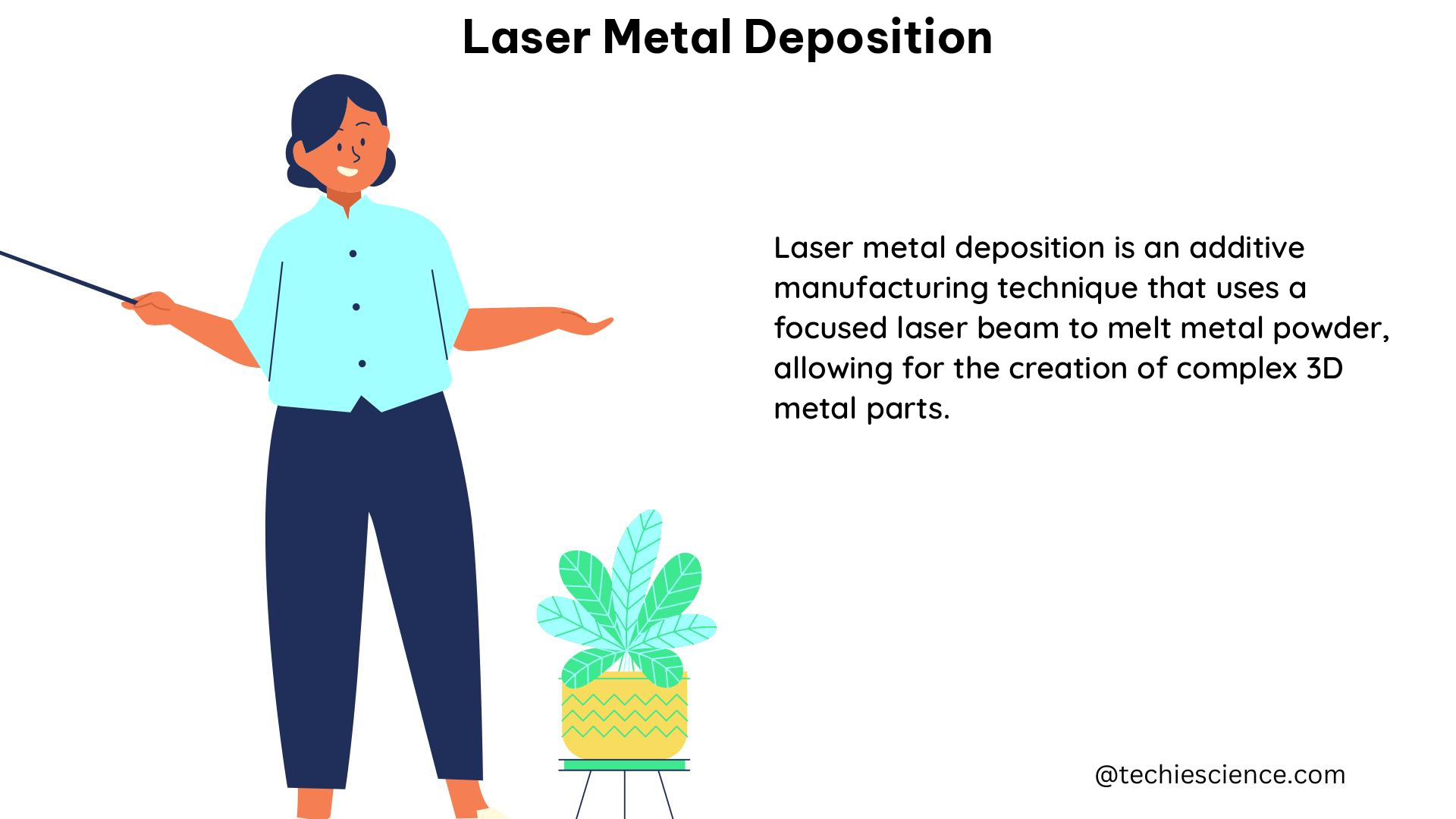Laser Metal Deposition (LMD) is an additive manufacturing process that builds up and repairs high-quality metal components by overlapping layers of powder material and melting them with a laser. The process parameters, such as laser power, scanning speed, and powder flow rate, significantly impact the process’s stability, defects, and mechanical properties. Online monitoring of LMD is crucial to ensure a stable process and detect anomalies.
Deposition Rate: Maximizing Productivity
The deposition rate is the volume of material deposited per unit time, typically measured in cm³/s or g/s. It is influenced by the laser power, scanning speed, and powder flow rate. The deposition rate can be calculated using the following formula:
Deposition rate = (Laser power × Powder feed rate) / (Scanning speed × Hatch spacing × Clad height)
Where:
– Laser power is the power of the laser beam, typically measured in watts (W).
– Powder feed rate is the mass of powder fed into the process per unit time, typically measured in g/s.
– Scanning speed is the velocity at which the laser beam moves across the substrate, typically measured in mm/s.
– Hatch spacing is the distance between adjacent laser tracks, typically measured in mm.
– Clad height is the height of the deposited layer, typically measured in mm.
For example, a study on LMD of Inconel 718 demonstrated a deposition rate of 1500 g/h, which is equivalent to 0.42 cm³/s.
Powder Catchment Efficiency: Optimizing Material Utilization

Powder catchment efficiency is the ratio of the powder caught by the substrate to the total powder fed into the process. It is a crucial factor in determining the material utilization and process economy. The powder catchment efficiency can be calculated using the following formula:
Powder catchment efficiency = (Mass of powder deposited) / (Mass of powder fed) × 100%
The same Inconel 718 LMD study achieved a powder catchment efficiency of 70%, which means that 70% of the powder fed into the process was successfully deposited on the substrate.
Clad Geometry: Controlling the Deposition Profile
The clad geometry refers to the shape and dimensions of the deposited material, which are critical for the final component’s functionality. The clad geometry is influenced by the following LMD parameters:
- Laser power: Higher laser power leads to a wider and taller clad, but excessive power can cause instability and defects.
- Scanning speed: Higher scanning speed results in a narrower and shorter clad, but too high a speed can lead to lack of fusion.
- Standoff distance: The distance between the laser nozzle and the substrate affects the energy density and powder distribution, influencing the clad geometry.
The clad geometry can be optimized by adjusting these parameters to achieve the desired shape and dimensions for the specific application.
Thermal Features: Monitoring the Process Dynamics
Thermal features, such as temperature distribution and cooling rate, can be used to monitor the LMD process online. These features are influenced by the process parameters and can provide valuable insights into the process dynamics. For example, a study on monitoring the LMD process using infrared thermography demonstrated the possibility of controlling the process by means of thermal features, independent of the position of the region of interest (ROI).
The temperature distribution during LMD can be described by the following heat transfer equation:
∂T/∂t = α∇²T + Q/ρc
Where:
– T is the temperature (K)
– t is the time (s)
– α is the thermal diffusivity (m²/s)
– ρ is the density (kg/m³)
– c is the specific heat capacity (J/kg·K)
– Q is the heat source term (W/m³)
By analyzing the temperature distribution and cooling rate, process parameters can be adjusted to optimize the thermal history and improve the mechanical properties of the deposited material.
Surface Finish: Achieving the Desired Quality
The surface finish of the deposited material is a critical quality attribute that affects the final component’s performance. The surface roughness is influenced by the following LMD parameters:
- Laser power: Higher laser power can lead to a rougher surface due to increased melt pool instability and spatter formation.
- Scanning speed: Higher scanning speed generally results in a smoother surface, as the melt pool has less time to develop surface irregularities.
- Hatch spacing: Smaller hatch spacing can improve the surface finish by reducing the step-like appearance between adjacent tracks.
The surface roughness (Ra) can be measured using a profilometer and is typically reported in micrometers (μm). For example, a study on LMD of Ti–6Al–4V alloy showed that the surface roughness ranged from 10 to 20 μm, depending on the laser power, scanning speed, and hatch spacing.
Defect Detection: Ensuring Process Reliability
Online monitoring of LMD can detect typical defects, such as porosity, cracks, and lack of fusion, by analyzing the thermal features or optical signals. For example, a study on crack detection during LMD using an infrared monochrome pyrometer demonstrated the capability to detect and localize cracks online.
The formation of defects in LMD can be described by the following mechanisms:
- Porosity: Caused by gas entrapment, insufficient melting, or lack of fusion between layers.
- Cracks: Caused by thermal stresses, phase transformations, or metallurgical defects.
- Lack of fusion: Caused by insufficient energy input, leading to incomplete melting and bonding between layers.
By monitoring the process and detecting these defects in real-time, process parameters can be adjusted to mitigate the formation of defects and ensure the production of high-quality components.
Conclusion
Laser Metal Deposition is a versatile additive manufacturing process that offers numerous advantages for the production of high-quality metal components. By understanding and optimizing the key process parameters, such as deposition rate, powder catchment efficiency, clad geometry, thermal features, surface finish, and defect detection, science students can gain a comprehensive understanding of this technology and its practical applications.
References:
- Gomez-Omella, M.F., Flores, J., Sierra, B.F., Ferreiro, S., Hascoët, N., and Chinesta, F. (2023). Optimizing porosity detection in wire laser metal deposition processes through data-driven AI classification techniques. ScienceDirect.
- Maffia, S., Chiappini, F., Maggiani, G., Furlan, V., Guerrini, M., Previtali, B. (2023). Enhancing productivity and efficiency in conventional laser metal deposition process for Inconel 718 – Part II: advancing the process performance. Int J Adv Manuf Technol.
- D’Accardi, E., Chiappini, F., Giannasi, A., Guerrini, M., Maggiani, G., Palumbo, D., Galietti, U. (2023). Online monitoring of direct laser metal deposition process by means of infrared thermography. Prog Addit Manuf.
- Monitoring the Laser Metal Deposition (LMD) process by means of thermal methods. (2022). QIRT.
- Analysis of In Situ Optical Signals during Laser Metal Deposition of Aluminum Alloys. (2021). Crystals.

Hi, I am Sanchari Chakraborty. I have done Master’s in Electronics.
I always like to explore new inventions in the field of Electronics.
I am an eager learner, currently invested in the field of Applied Optics and Photonics. I am also an active member of SPIE (International society for optics and photonics) and OSI(Optical Society of India). My articles are aimed at bringing quality science research topics to light in a simple yet informative way. Science has been evolving since time immemorial. So, I try my bit to tap into the evolution and present it to the readers.
Let’s connect through